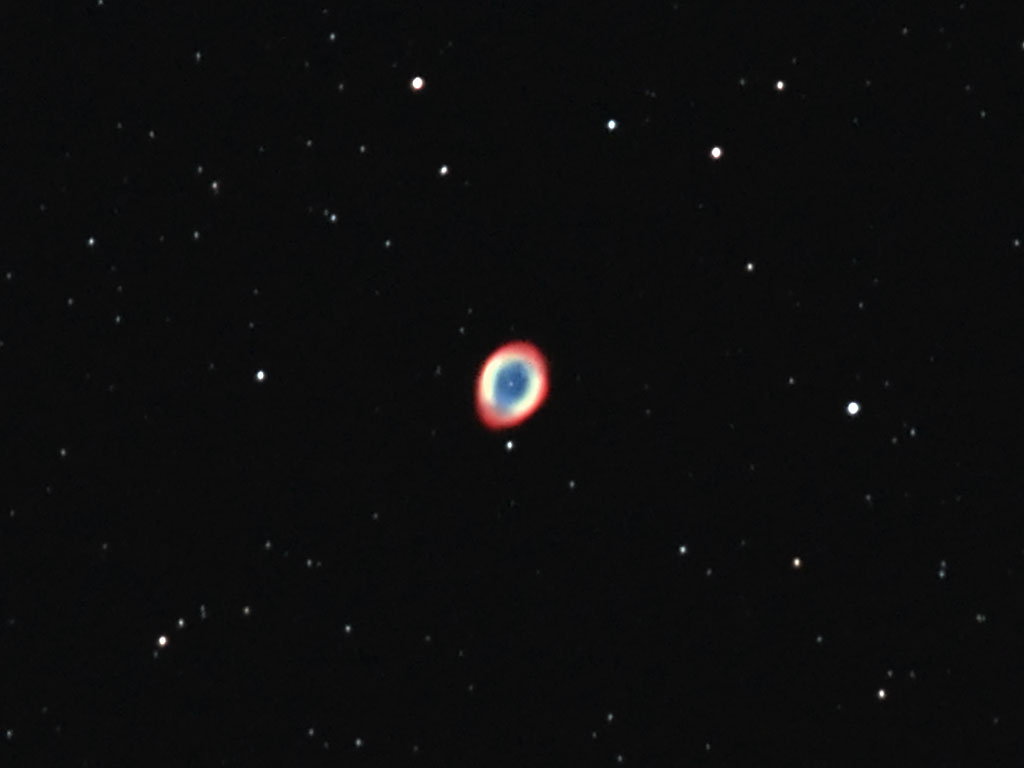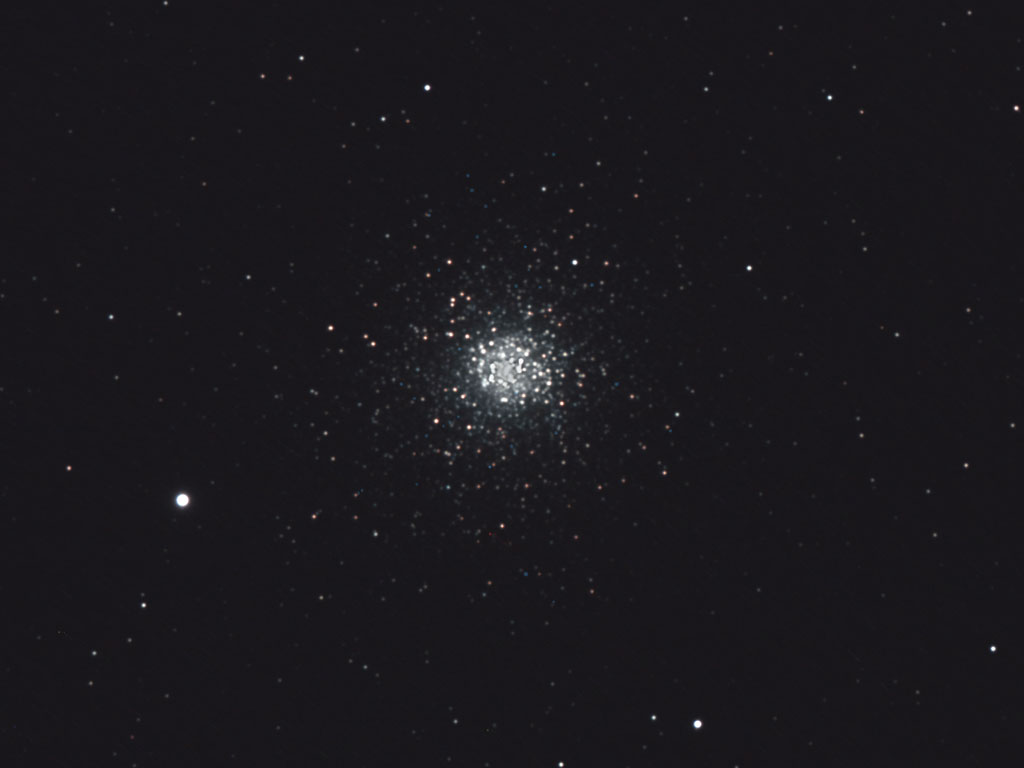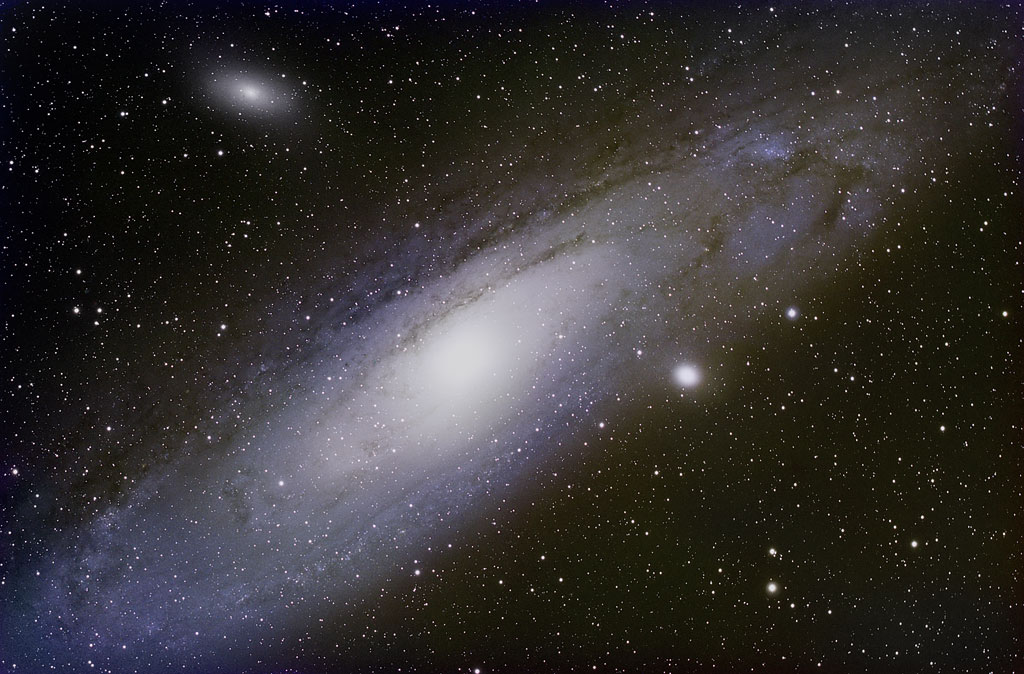It seems I catch a glimpse of M31 with my unaided eye about once a year. The night of October 19-20, 2009, was one of the best I have seen in Maryland for a long time for astrophotography or visual observing. M31, which is located about 2.5 million light years from Earth, is said to be the most distant object that is visible to the unaided eye. I was able to see it from my driveway on the night of October 19-20, 2009 with dark-adapted eyes. It only made sense to try to make my first photo of M31. M31 is an image-processing challenge because the extreme contrast between its bright core and the dimmer regions and dust lanes.
Among the public, persons who know what a galaxy is are likely to think of the spiral galaxy M31 as the paradigm of a galaxy. There is no such paradigm, as galaxies come in every conceivable size and shape, and in no shape at all (amorphous). M31 must, however, look very much like our home galaxy, the Milky Way, would look if viewed from a suitable distance.
Speaking of distance, M31 is a little bit closer to you now than it was when you started reading this. The Milky Way and M31 are moving toward each other with a net velocity of about 120 km/sec. They will meet in about 2.5 billion years. It will not be a violent collision for the most part—the distance between stars within the two galaxies is very great (except at the cores, where tightly packed stars orbit the massive central black holes) and stars will not be colliding and merging or being smashed to bits. While there are too many unknown variables to predict the outcome of the collision, one possibility is the creation of a single, giant elliptical galaxy. The fate of the massive central black holes is impossible to predict. What would happen to the Sun and planets? Again, the answer is unknown, but the possibilities range from not very much at all to ejection from the galaxy by gravitational forces. The human race will either have moved elsewhere or become extinct by then, so chances are the fate of the Solar System will matter only to the bacteria that survive deep underground as the Sun ages and moves toward its red-giant phase.
Notice M31's much smaller companion galaxies, the dwarf elliptical galaxies M110 (top left) and M32 (center right). M31 is believed to have at least 14 dwarf galaxies gravitationally bound to it. There are numerous named objects and areas in the vicinity of M31. The blue star cloud at top right is called NGC 206. The Milky Way also has a number of companion galaxies, the most prominent of which are the Greater Magellanic Cloud and the Lesser Magellanic Cloud, which are visible from the southern hemisphere.
M31 is believed to contain about one trillion (1012) stars, compared to between 200 and 400 billion (4X1011) in the Milky Way. Recent measurements of dark matter, however, show evidence that the Milky Way is as massive as M31 and possibly slightly more massive.
This image is all Mac: Equinox 6, PHD Guider, and Nebulosity controlled the Astro-Physics 1200GTO mount and Takahashi 6-inch refractor, the Starfish guide camera, the RoboFocusers, and the SBIG STL-11000M CCD camera. Images were reduced with Nebulosity, Pixinsight, and Photoshop. Everything ran on 15" and 17" MacBook Pro's.
|


